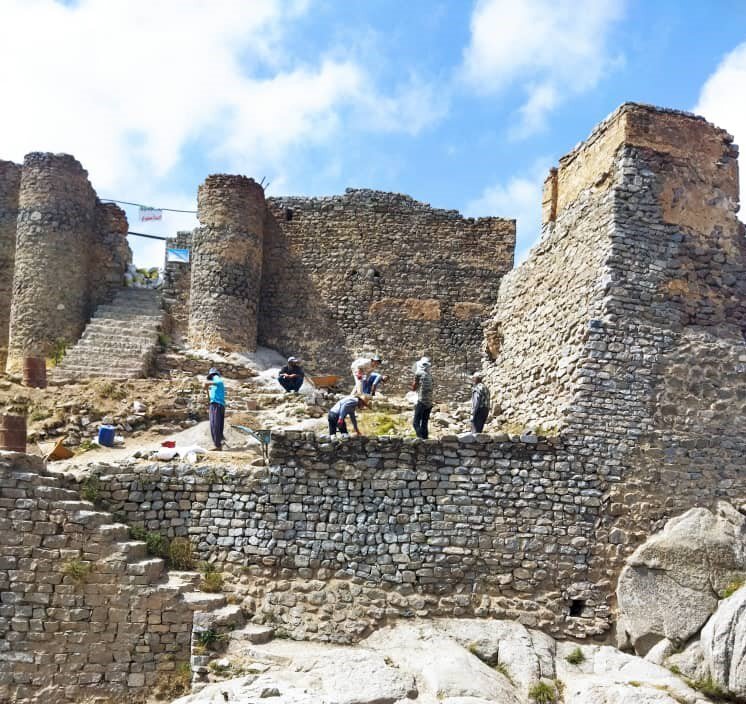Restoration begins on historical castle in East Azarbaijan

TEHRAN –The ancient Babak fortress in East Azarbaijan province, northwest Iran, has undergone some rehabilitation works, the provincial tourism chief has said.
The project involves strengthening the foundation and walls, and repairing the roof and flooring, Ahmad Hamzezadeh explained on Monday.
A long-term project of the province is the restoration and protection of Babak castle, which is continuously carried out by the province’s cultural heritage experts, the official added.
The ancient fort is named after Babak Khorramdin, an Iranian national hero, warlord, and revolutionary leader who fought against Arab invaders until he died in 838 CE.
The ruined fortress is nestled atop a sharp cliff. Thus, ascending the mount to set foot on the ancient fort may seem somewhat arduous for many visitors but in most cases proves to be a considerable and gratifying experience.
The fortress can be reached via several access paths, though the normal route ascends stairs behind the seasonal Babak Hotel.
It consists of several stone towers and lodging areas stretched over a space of nearly ten thousand square meters and the origins of the monument are said to date from the Sassanid era (224–651).
Once at the top, onlookers are greatly rewarded with vistas of the encircling Arasbaran oak forests, jagged cliffs, and steep gorges.
Babak fortress is embraced with Arasbaran Protected Area, which is a candidate for inclusion in the UNESCO World Heritage list for 2018.
From very early history to modern times, defensive walls have often been necessary for cities to survive in an ever-changing world of invasion and conquest.
Fortifications in antiquity were designed primarily to defeat attempts at the escalade, and to the defense of territories in warfare, and were also used to solidify rule in a region during peacetime.
Uruk in ancient Sumer (Mesopotamia) is one of the world’s oldest known walled cities. The Ancient Egyptians also built fortresses on the frontiers of the Nile Valley to protect against invaders from neighboring territories.
Many of the fortifications of the ancient world were built with mud brick, often leaving them no more than mounds of dirt for today’s archaeologists.
ABU/MG
Leave a Comment